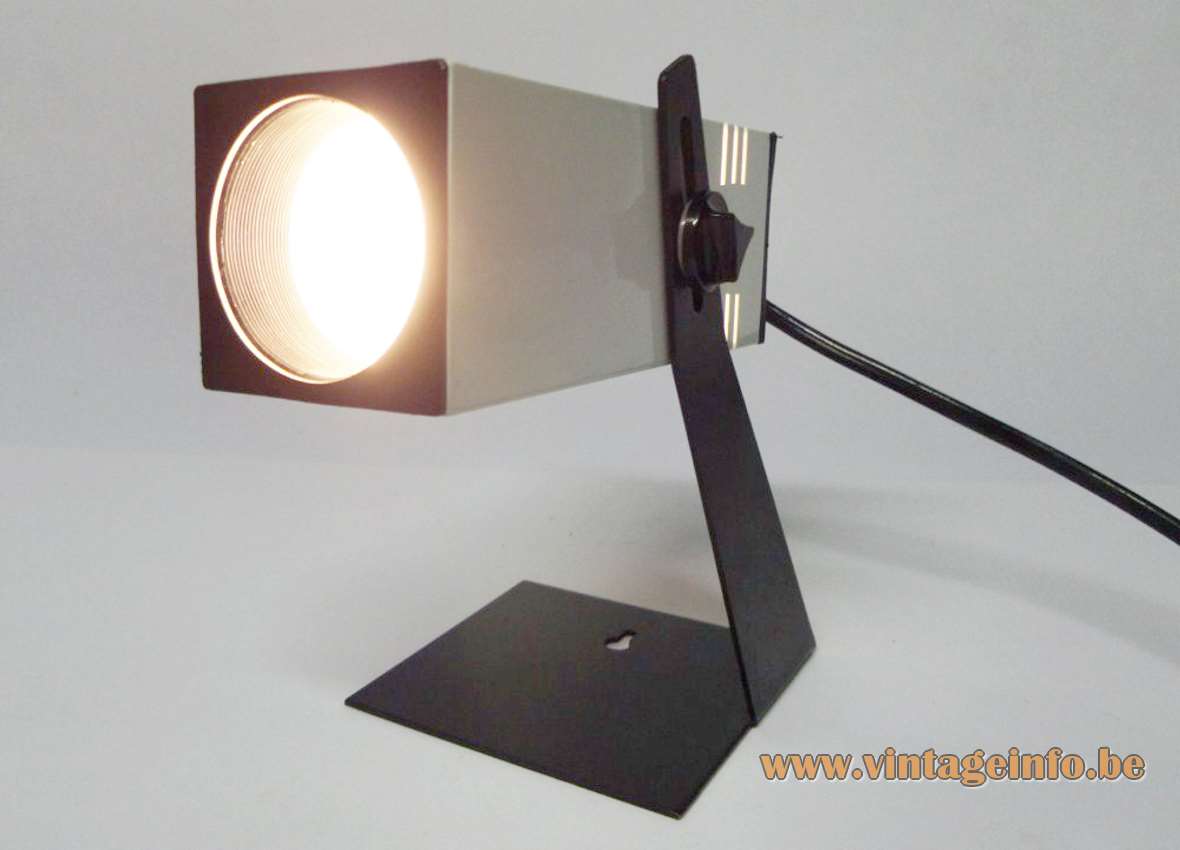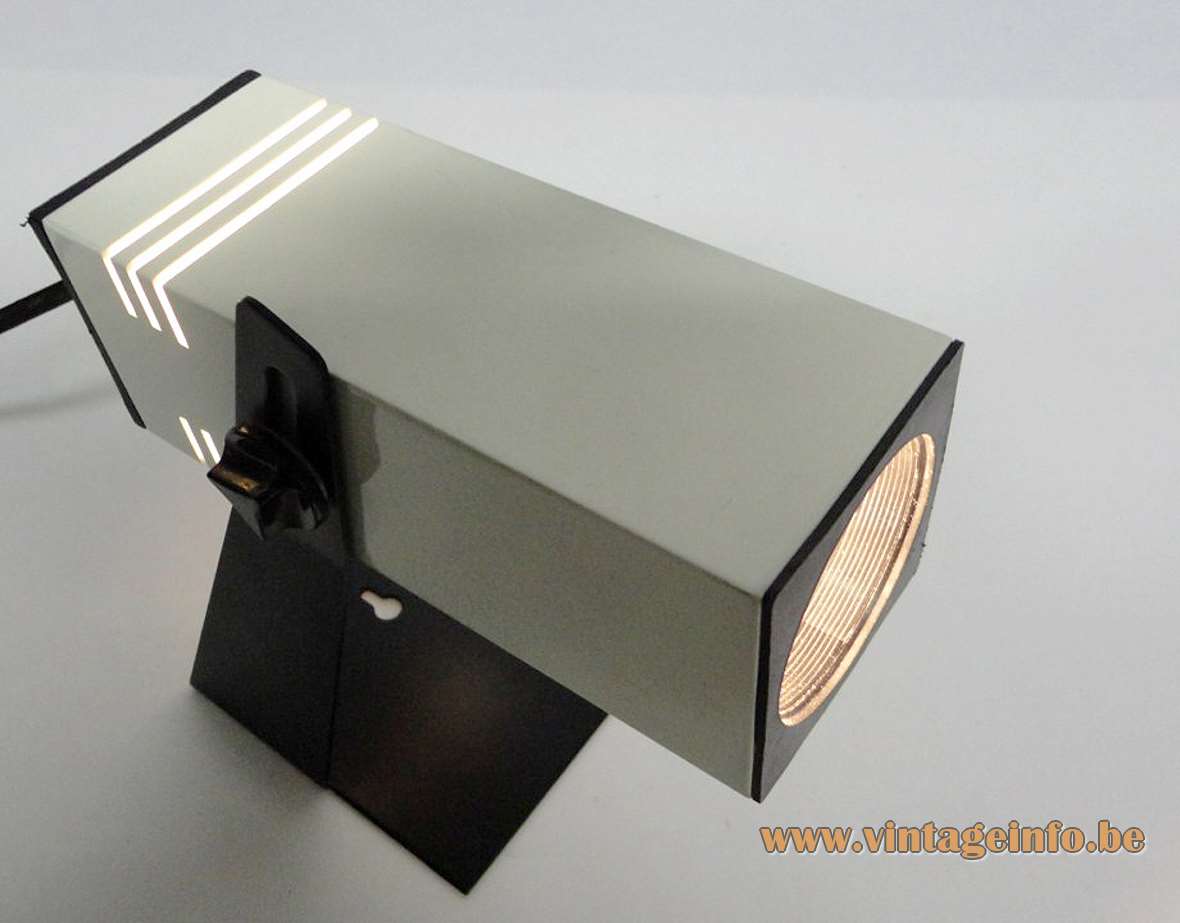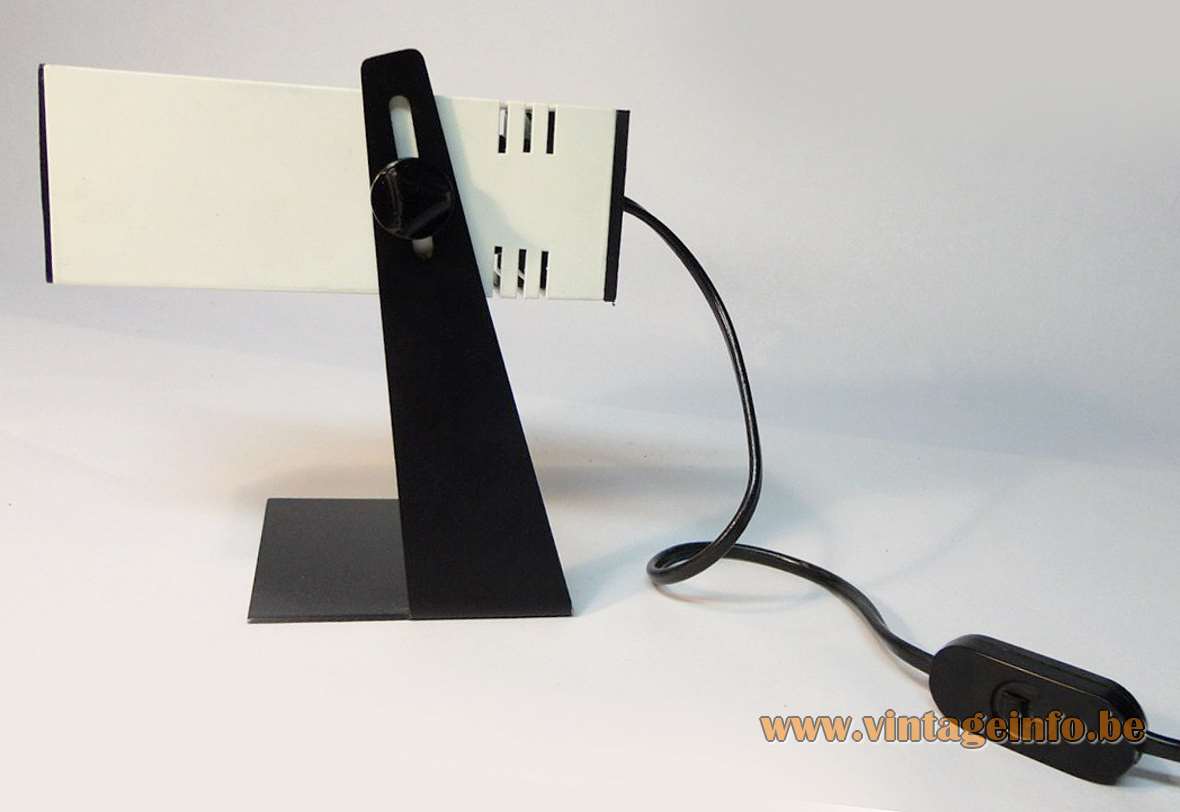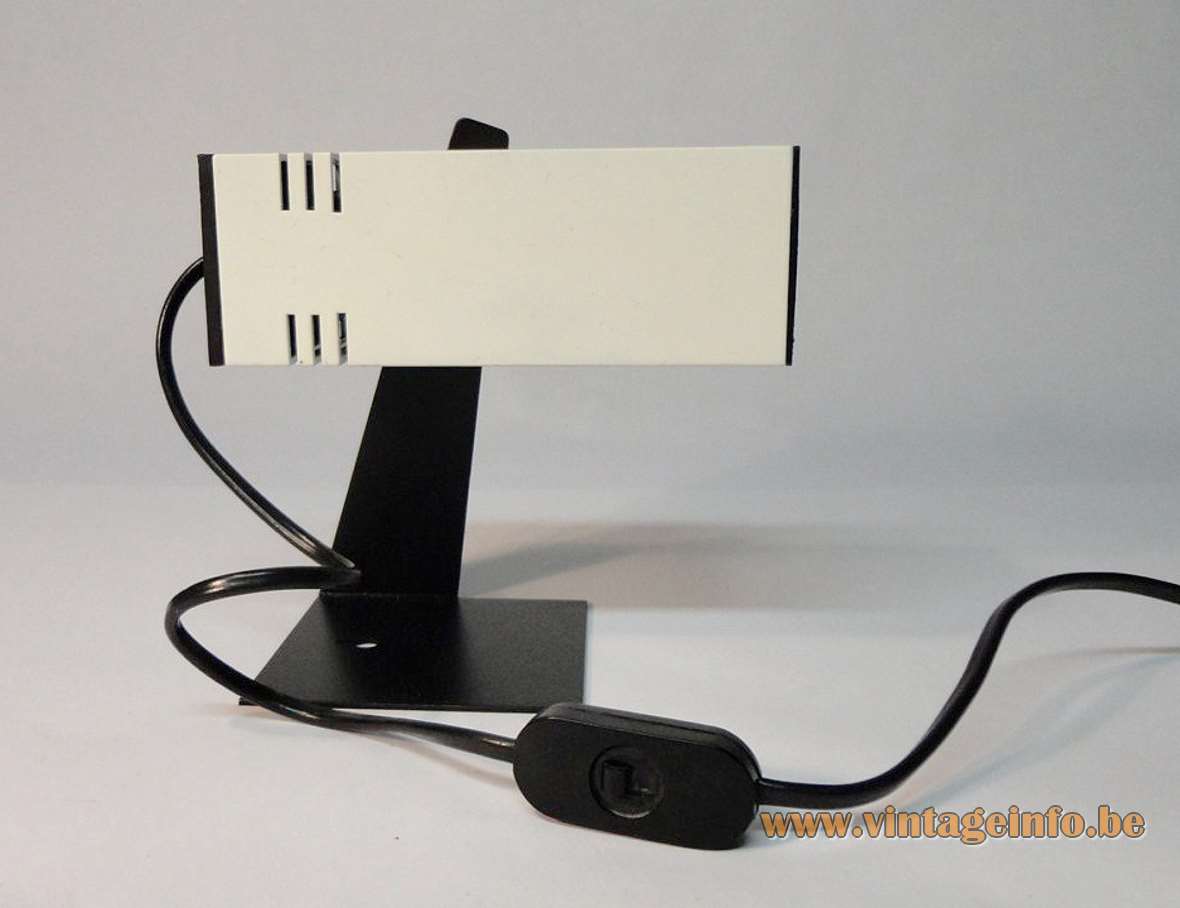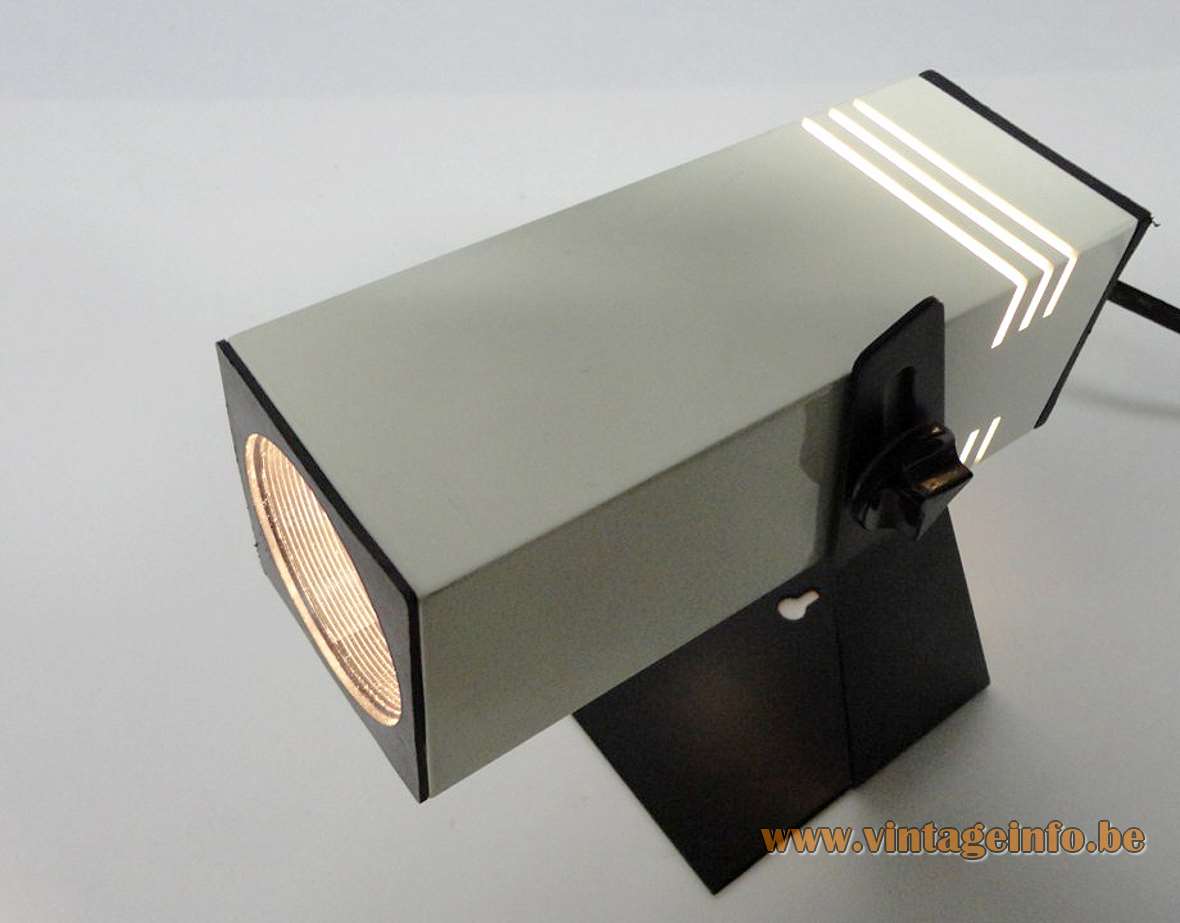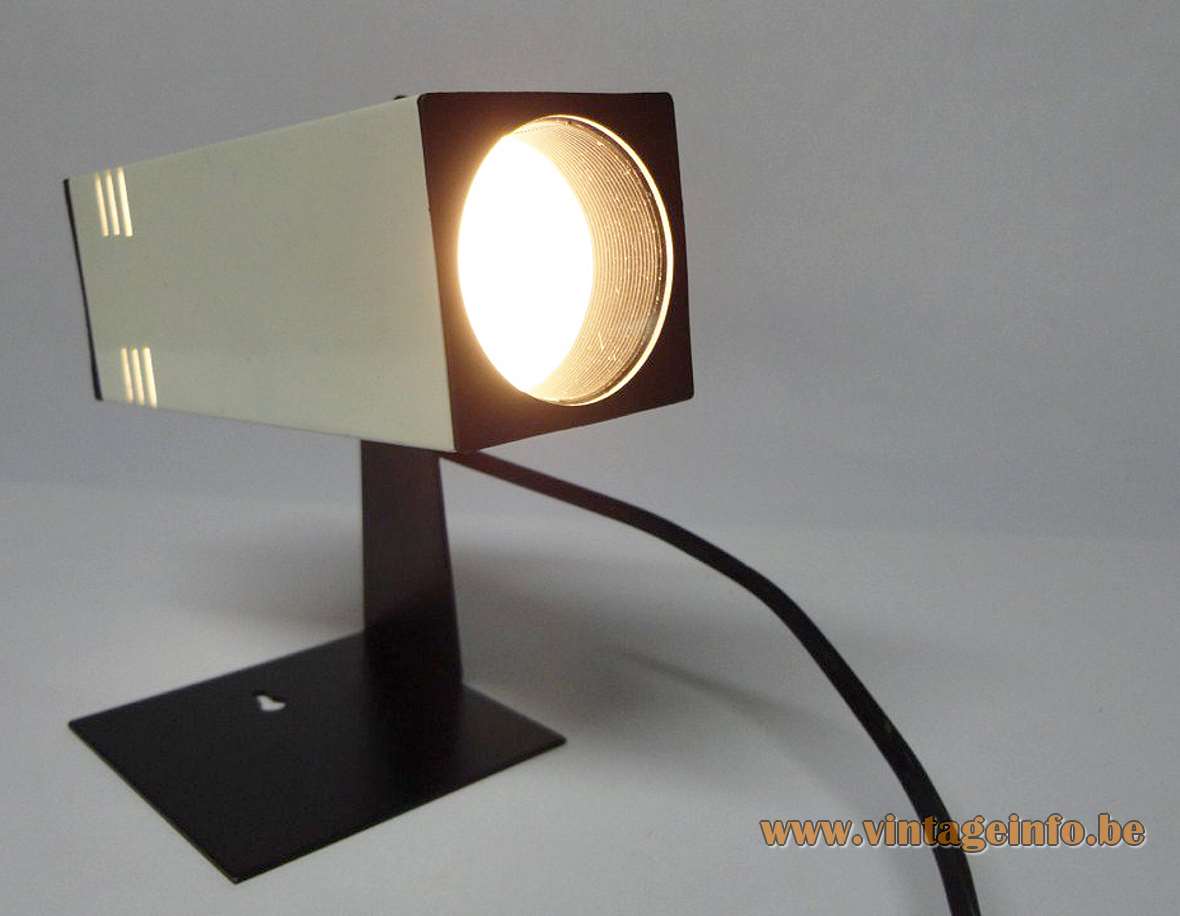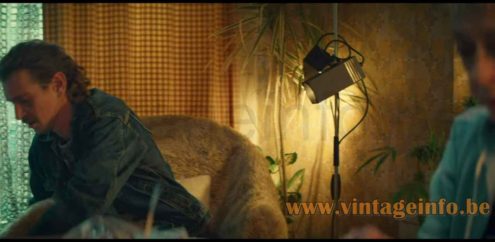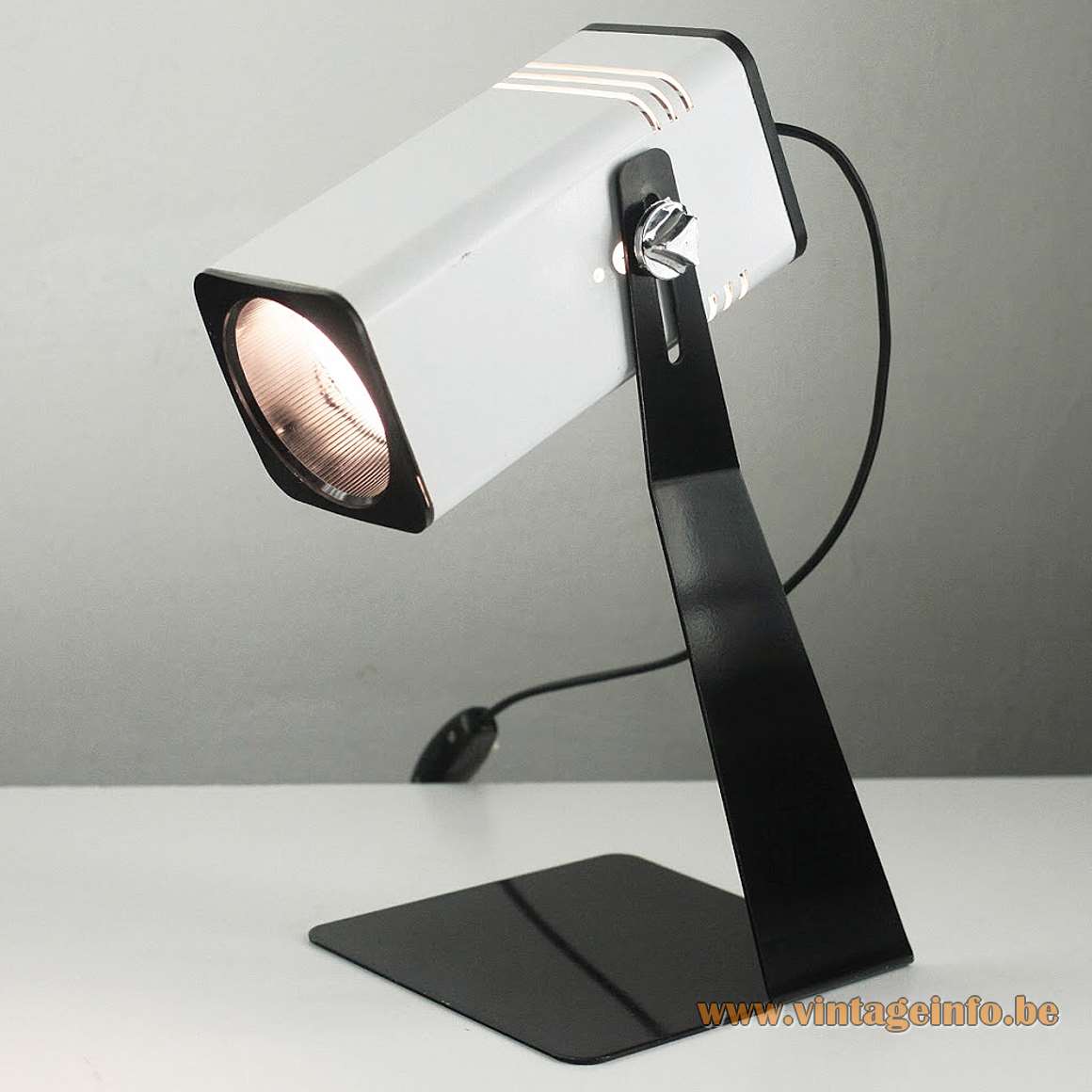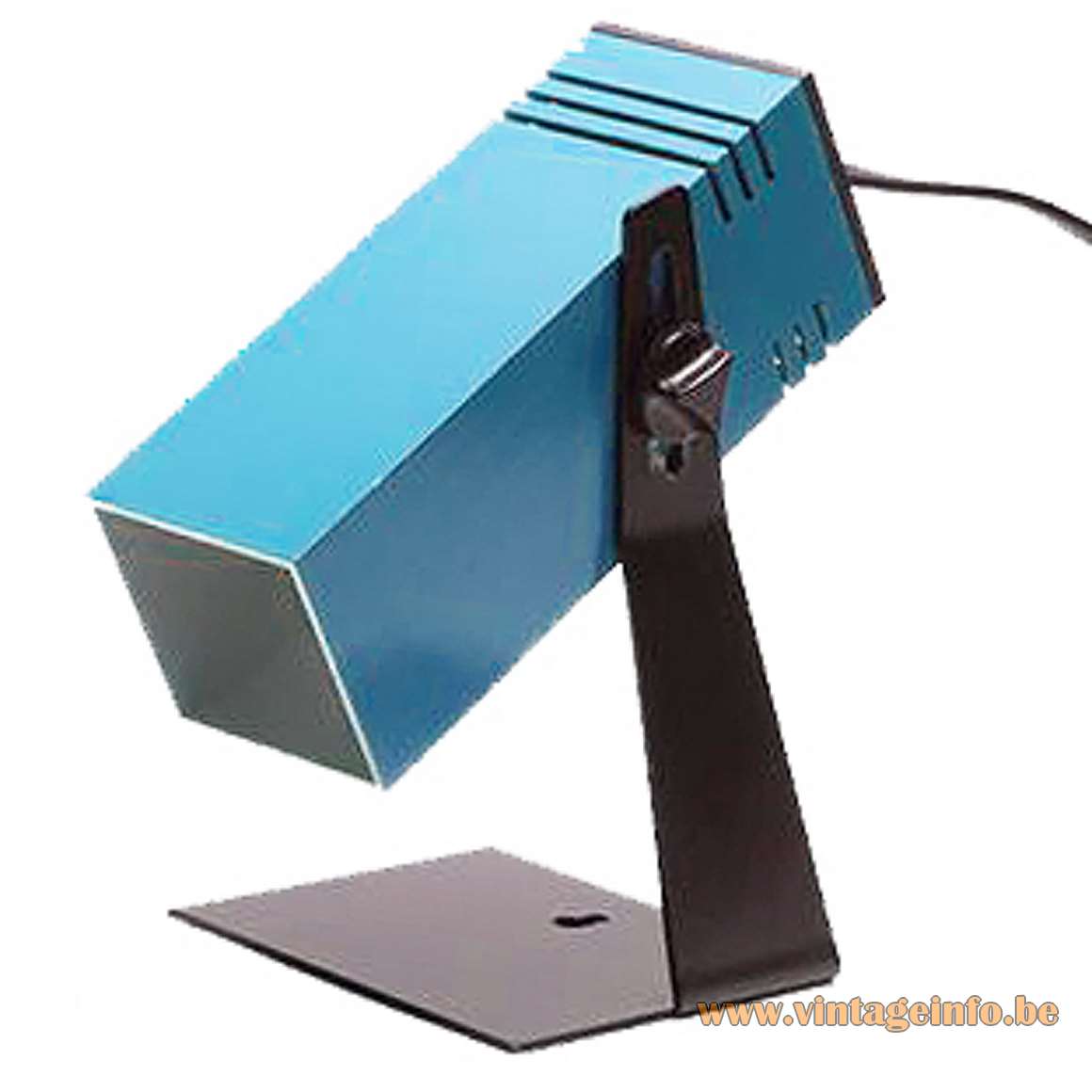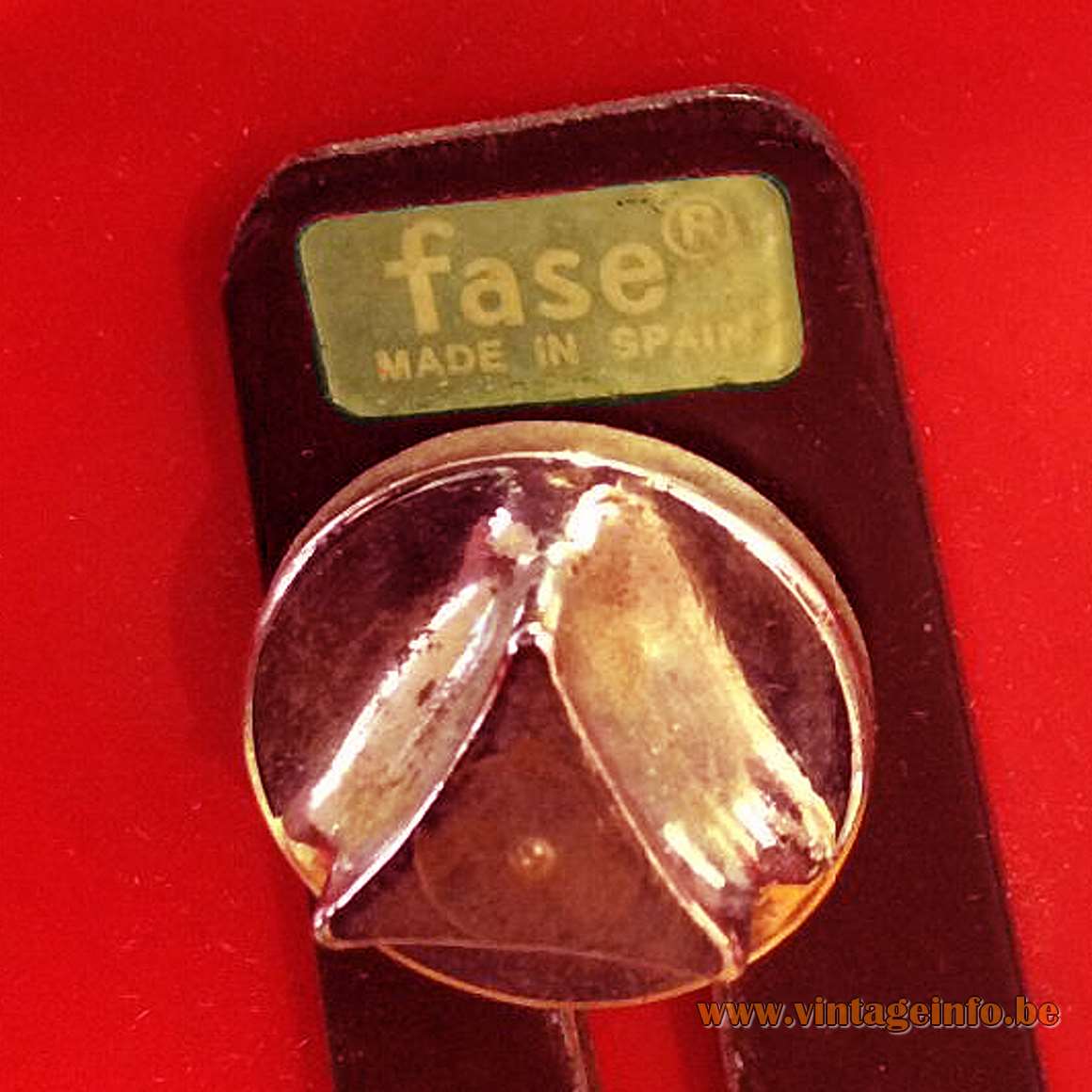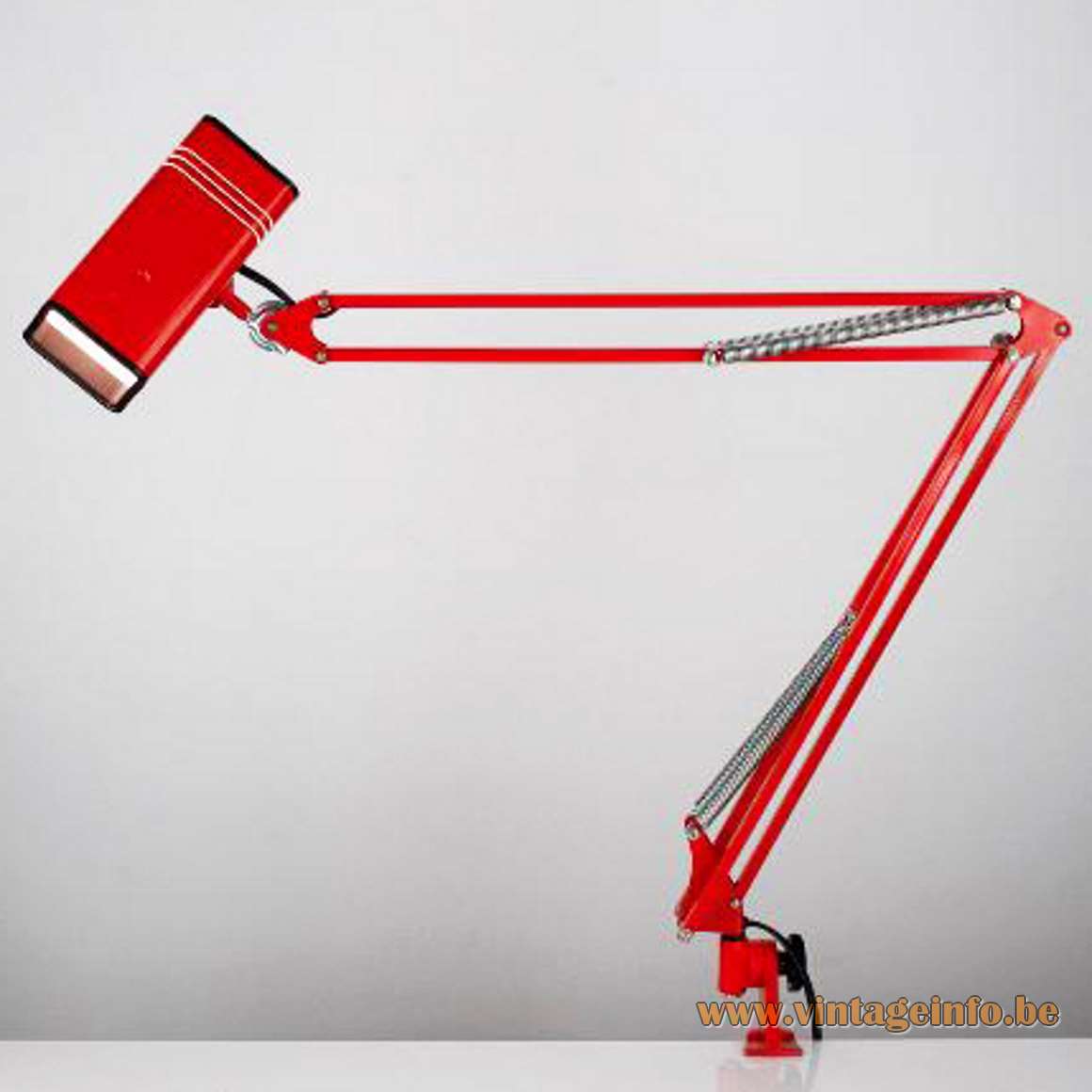Lamps In The Movies
A floor lamp very similar to this 1970s square tube table lamp, also made by Brilliant Leuchten, was used as a prop in the 2021 Belgian comedy TV series Baraki. Here in episode 1, series 1. Starring Pierre Nisse, Julien Vargas and Sophie Breyer.
Links (external links open in a new window)
Guardia Civil – Civil Guard – Wikipedia
History of Brilliant on their website
Baraki TV series (2021) – IMDb
Vintageinfo
Square tube table lamp with rounded corners
Architect clamp lamp with rounded corners
Massive Belgium Fase style lamp
Other Brilliant Leuchten lamps
Achille Castiglioni VLM switches
1970s Square Tube Table Lamp
Materials: White aluminium beam lampshade with elongated slots. Flat folded black iron base. Black plastic, black plastic ornamental screw. Bakelite E27 socket.
Lampshade: 17 x 8 x 8 cm /6.69 x 3.14 x 3.14”
Arm: 28 cm / 11.02”
Base: 15 x 15 cm / 5.90 x 5.90”
Electricity: 1 bulb E27, 1 x 40 watt maximum, 110/220 volt.
Any type of light bulb can be used, not a specific one preferred.
Period: 1970s – Mid-Century Modern.
Designer: To be appraised.
Manufacturer: Brilliant AG, Brilliantstraße 1, D-27442 Gnarrenburg, Germany.
Other versions: The 1970s square tube table lamp exists in several colours and unbelievable many variations. The lampshade was used for several other table lamps and floor lamps, clamp lamps, spotlights and so on. The lampshade was also made with rounded corners and a chrome plastic screw, as you can see below. This lamp can be found over here, on Vintageinfo.
This 1970s square tube table lamp was also sold by Fase from Madrid, Spain. Brilliant Leuchten from Germany produced this lamp. This table or wall lamp (it has a hole for a hook to hang) has a Brilliant Leuchten label, model 5155. The only difference is the wiring. For the Brilliant Leuchten lamp electric parts were used from VLM Components from Italy. It also has the 475 switch designed by Achille Castiglioni. Fase used their own parts.
Almost similar lamps were made or sold by Philips from The Netherlands. You can find an example over here.
Brilliant
Brilliant AG was founded in 1951 as Brillantglashütte oHG / Lippold and Tschammer in Gnarrenburg, Germany as a glass making company. In 1953, the glass-works started to produce bar pendant bowls out of glass. These lamp fittings were the first step towards the exclusive production of lighting fixtures.
In 1970, the facility for industrial glass had to be sold in order to create more space. At the end of the 70’s, the name Brillantglashütte KG changed into Brillantleuchten AG. In 1991, the company name was changed for the last time. The German word “leuchten” (lights) has been deleted and a second “i” has been added to the final version Brilliant AG.
In 2000, the American Sli Inc. became the new main shareholder. Since 2004, the British “The National Lighting Company” has been the new main shareholder of Brilliant AG.
Fase
The Fase company was founded by self-made man Pedro García Martin and designer Luis Pérez de la Oliva.
The Boomerang 64 lamp was one of their first designs in 1964, you find it over here on Vintageinfo. Initially they sold their self-produced lamps to the markets in and around the capital Madrid before successfully opening a factory in Torrejón de Ardoz on the outskirts of the city.
They produced mainly lamps, but also ashtrays and other products such as office bins and coat racks.
Fase supplied many lamps to the offices of General Franco‘s dictatorial government and the Guardia Civil, some sort of military police. From 1975 on, after the death of Franco and the end of the regime, Fase started with Italian Modern and Bauhaus-inspired designs. The Spaniards were unfamiliar with this design because of the Franco regime that ruled the country with an iron fist and allowed few foreign influences.
During the 70s Fase exported lamps to Belgium, The Netherlands, Luxembourg, Great Britain, Norway, France, Italy, Germany, Portugal, United Arab Emirates, Japan, Hong Kong, Morocco, the United States and Canada. In total in more than 32 countries.
The 1980s
In the 1980s Fase jumped on the bandwagon of the halogen lighting. The break with tradition proved unsuccessful and ultimately contributed to the end of the business. A large fine of the Treasury in the early nineties for tax irregularities was the end for Fase. The company was officially dissolved in 1996.
Drowned, the company sold its manufacturing license to a German brand, Ma-Of, which slightly modified the original design by adding more chrome. Before these final death rattles, the partners had already separated. GEI (Gabinete Estudios Industriales – Cabinet Industrial Studies) was another company that sold similar lamps. Also Massive from Belgium produced a few lamps in this style.
When the company stopped producing them abruptly, there was a lot of ‘stock’ available in the warehouses. That’s why you find relatively many lamps with a label attached. Many lamps are sold new and never used in the box (NOS – New Old Stock).
Designers who have worked for the company include: Gabriel Teixidó. He designed the Iberia and Meca series and Tomás Díaz Magro, responsible for the Apolo, Minifase and Impala lamps. The most productive was Luis Pérez de la Oliva, who designed the majority of the Fase lamps.
Fase also sold lamps made by others such as the Yamada Shomei ‘Manon’ table lamp from Japan. You can find it over here on Vintageinfo. The Prisma table lamp was produced in Italy by F.A.A.I. Arredo. Also the Sinus stacking ashtray made by Helit from Germany. A design by Walter Zeischegg from 1967. You can find it here in the MoMA, New York. Fase also sold lamps from other companies.
LUPELA
LUPELA was founded by LUis PErez L’Anzas (acronym of “lupela”). Luis had two sons: Fernando Perez de la Oliva, who later registered the LUPELA trademark, and Luis Pérez de la Oliva, who founded Fase, together with Pedro Martin. Fernando bought the production rights for 5 lamps by designer Jose Luis Gugel Sacha: the Reina, Cobra, Cisne and models 225 and 226. He agreed with his brother Luis that Fase would not produce articulated lamps. They did not keep to the agreement and Fase designed and produced many lamps inspired by LUPELA models.
Many thanks to Lluís from Eclectique Vintage for the photos and the enthusiasm.
